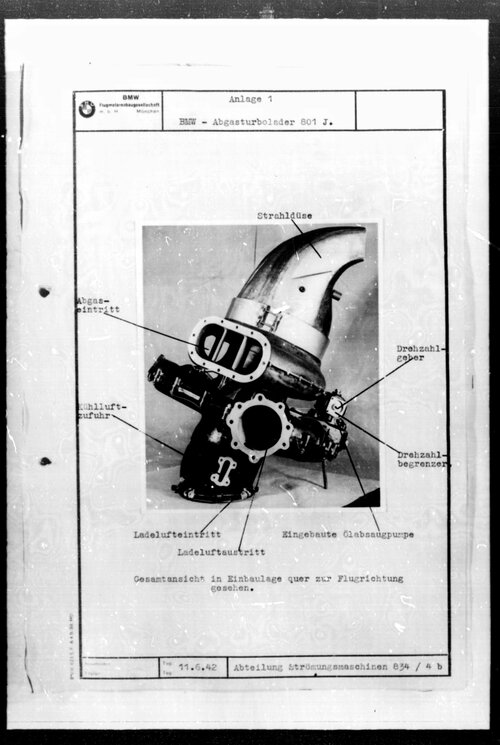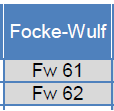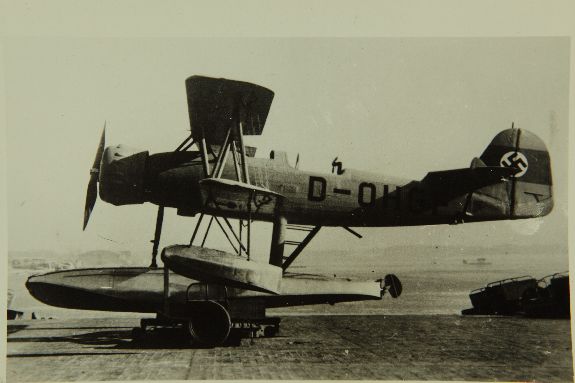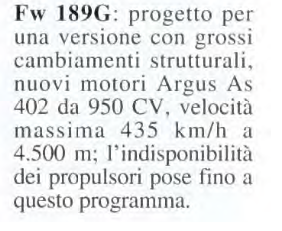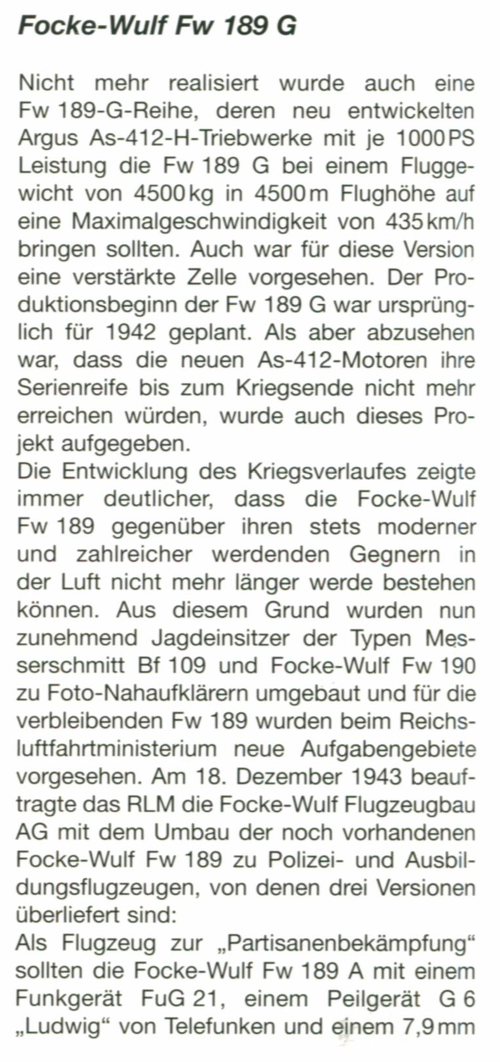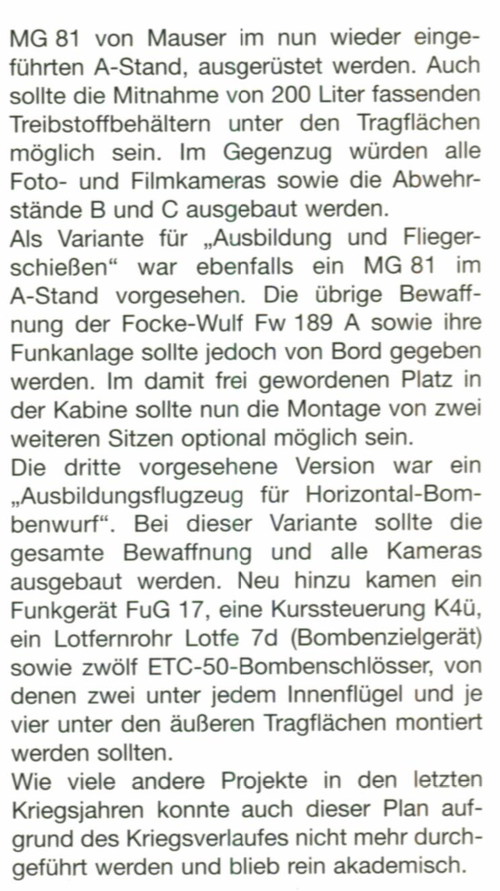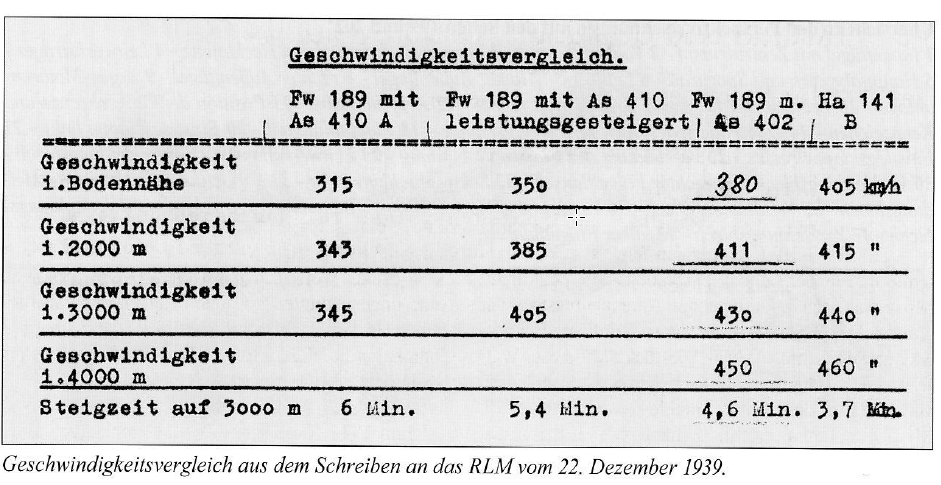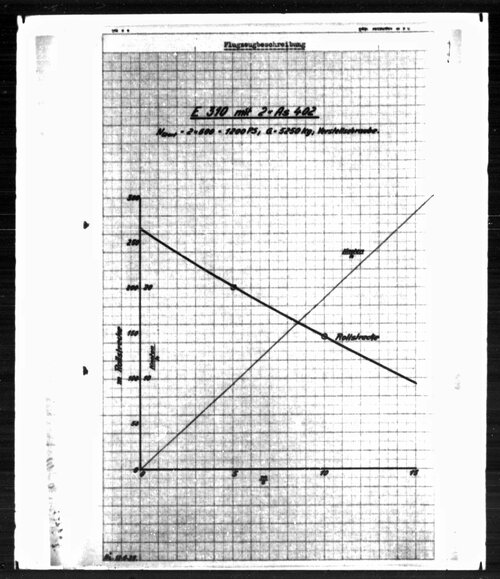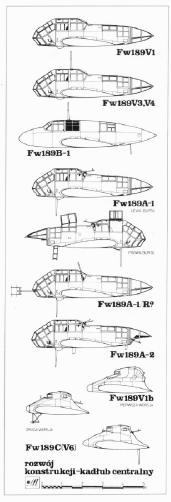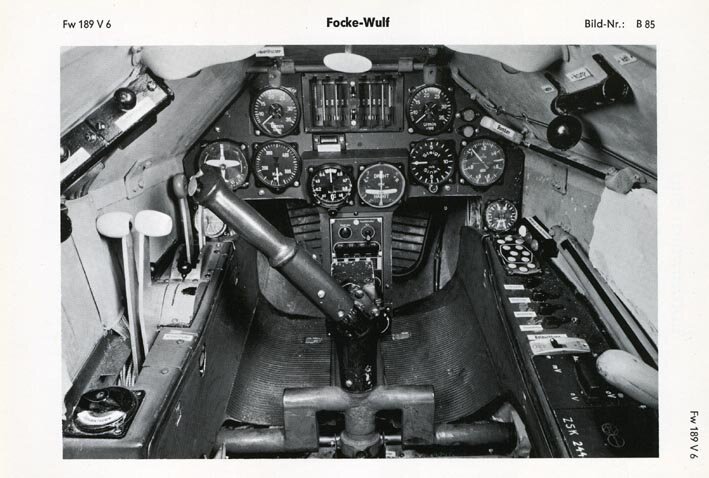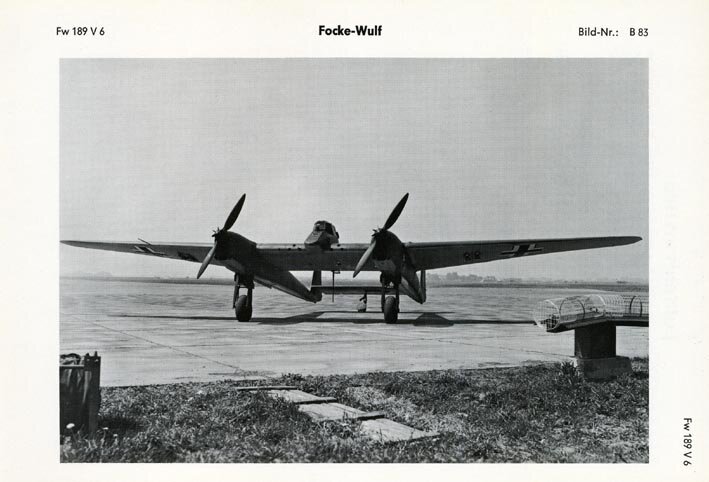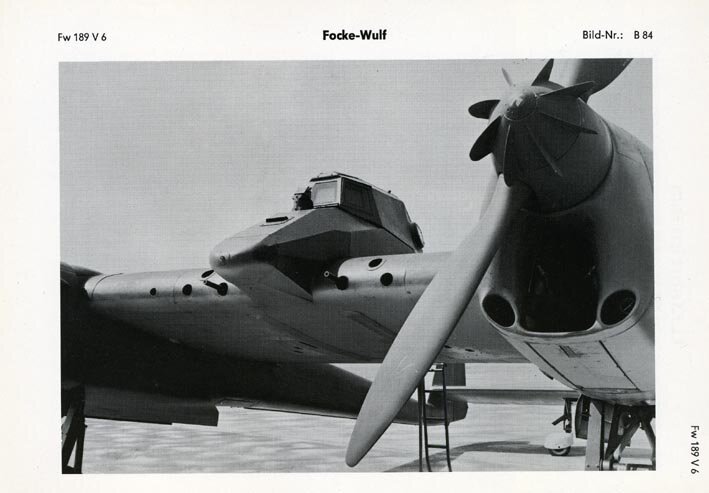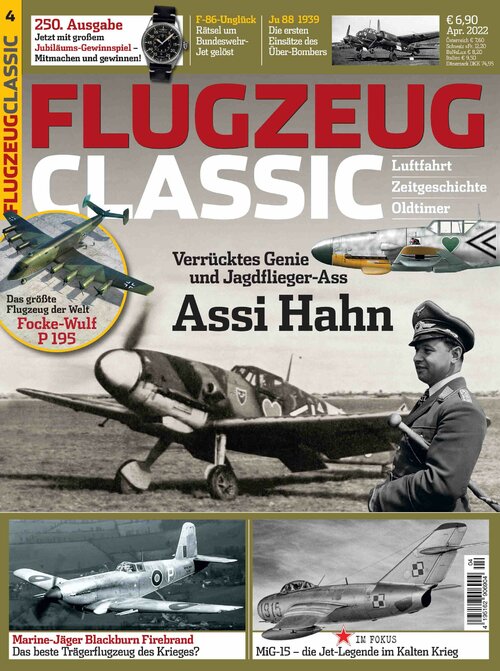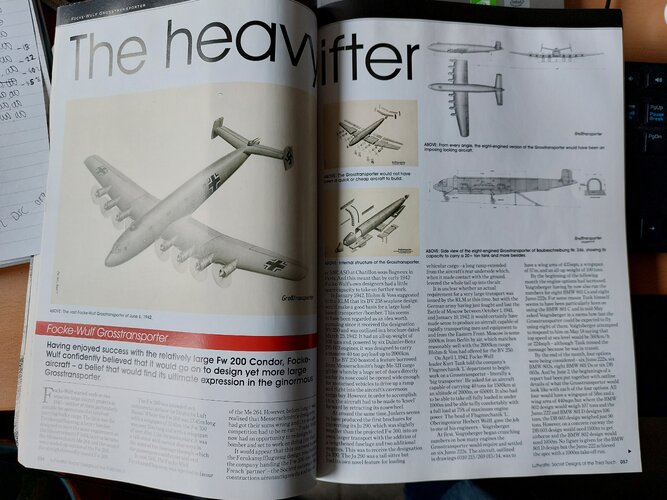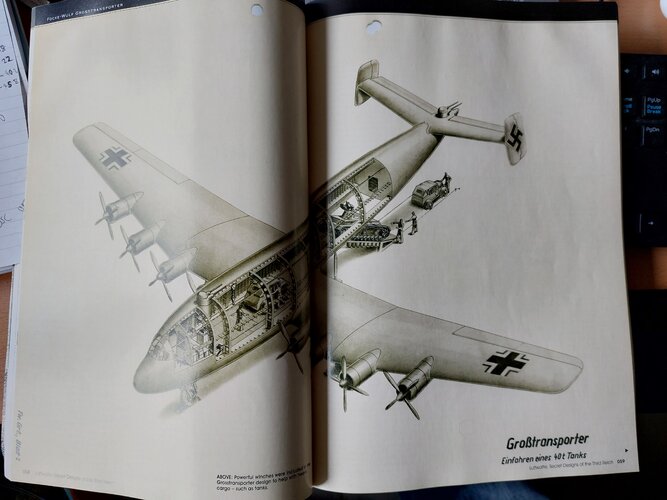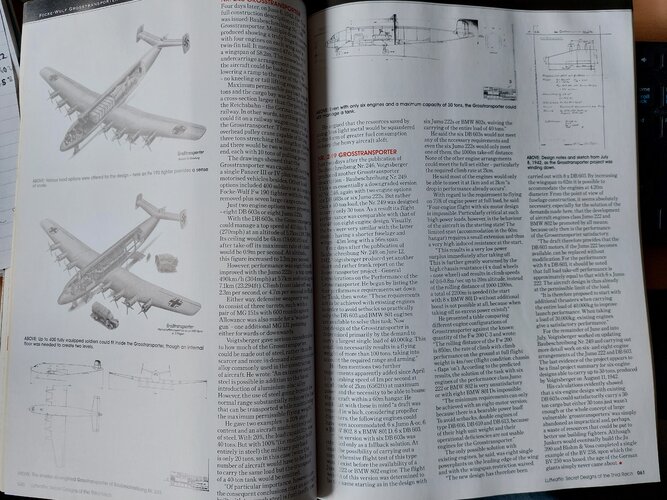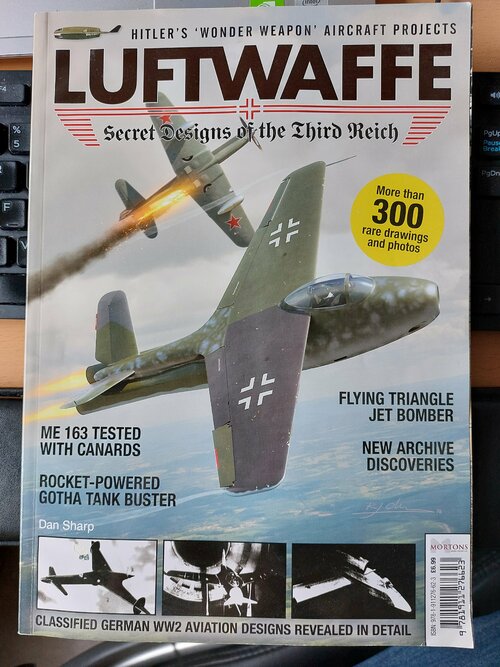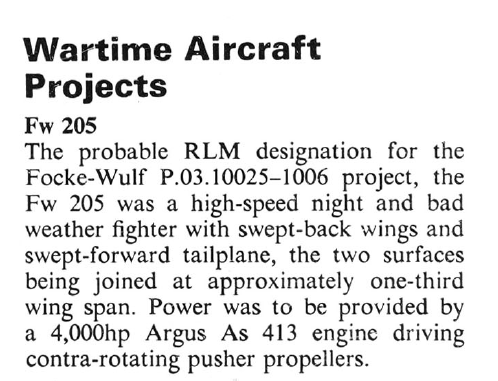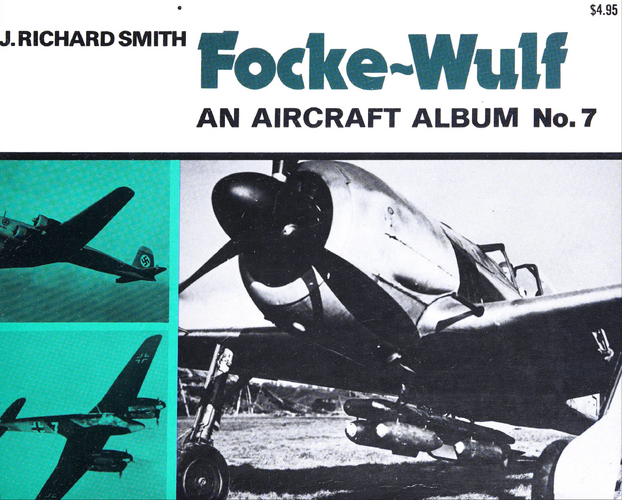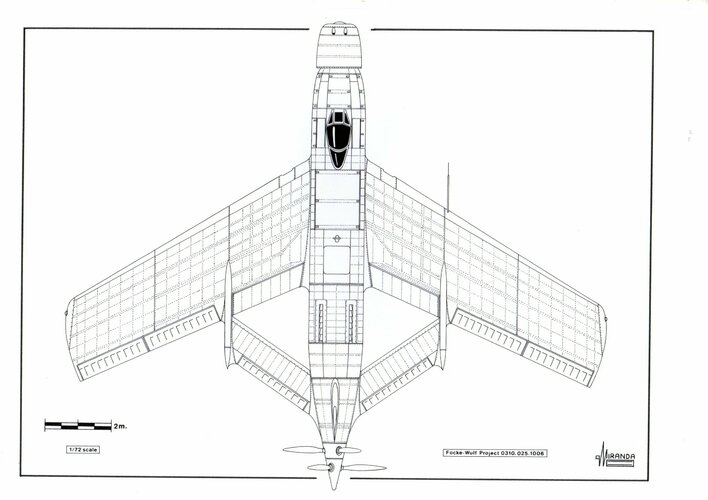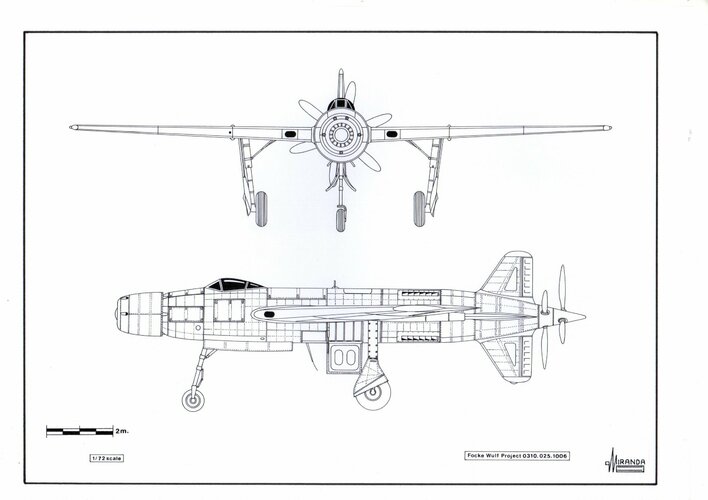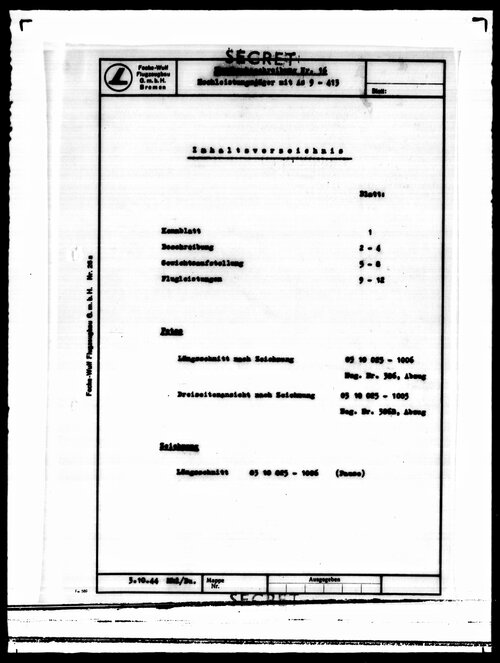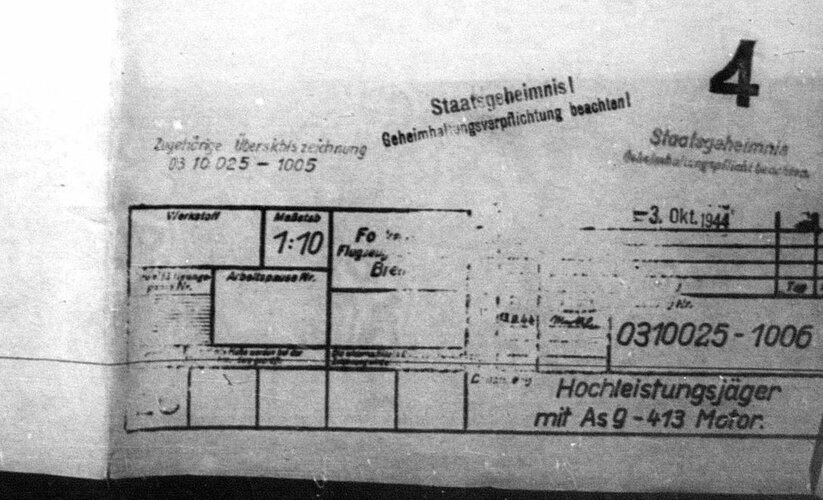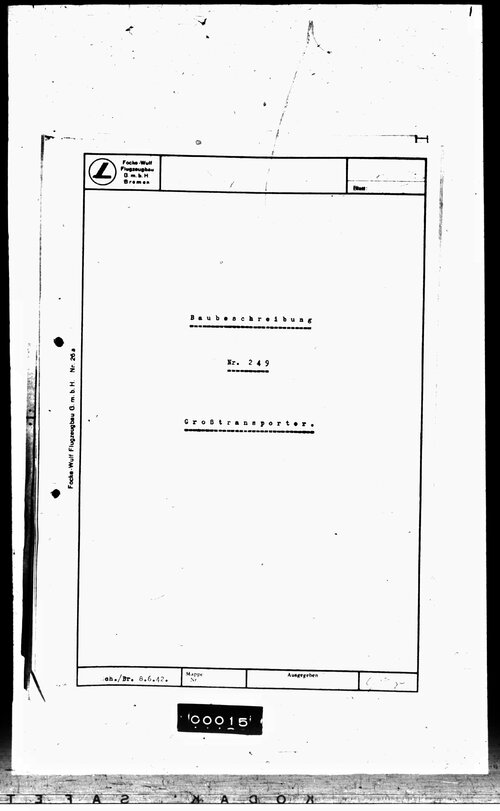What was this,Focke-Wulf FW.205 ?!.
On 27 January 1945, the OKL published the
Vorrückenprogramm for high performance night fighters, equipped with the new radar Telefunken FuG 222
Pauke S with parabolic antenna of 45 cm of diameter. It was installed INTERNALLY, within an aerodynamic container of di-electric material placed in the nose of the airplane. In this model, the scope was replaced by a Revi device equipped with a red filter that did not affect the night vision of the pilot. It was expected that the new night fighter would reach a maximum speed of 900 kph, with a service ceiling of 9,000 m and have an armament of four forward-firing MK 108/30 cannons.
The firm Arado presented the project E.583, a single seat flying wing powered by two HeS 011 A turbojets. The Dornier Project Office of Friedrichshafen designed a
schlechtwetterjäger (all weather interceptor) driven by two DB 603 LA in-tandem piston engines. Based on the aerodynamics of the P.247/1, it was equipped with
Bremen 0 radar,
Schräge Musik and had a crew of two. It also had an unswept laminar flow wing originally designed by Heinkel for the Do.335 B-4, modified to reach the 16.44 m of span. The vertical tail surfaces were the same than those in the standard Do 435 and they used the horizontal surfaces originally designed for the Do 535. The project was presented to the RLM on 27 January 1945 as Do P.252/1
moskitojäger but its manufacturing was left aside in March 1945 in favour of the faster Messerschmitt Me 262 B-2.
By the end of 1944 the Heinkel engineers designed an advanced system of automatic triggering weapons combining the fire control radar FuG 222
Pauke S with the gyroscopic gunsight Askania EZ 42
Adler. The 1078 project was created to prove that the system could be integrated in single engine fighters, providing them with additional capacity to act as night fighter or
moskitojäger controlled by the ground command by means of the FuG 25a and FuG 125a devices installed onboard.
The P.1078 A was very much like the Messerschmitt P.1101 with swept wings and tail surfaces. It had a small parabolic antenna fixed on the nose and two 30 mm cannons to both sides of the pilot. The P.1078 B had a twin boom type fuselage and a batwing like that of the Blohm und Voss P.209.01, chosen to diminish the compressibility buffeting effect and the roll damping at high speed. It was expected that the anhedral wingtips would perform the function of a tailplane. The radar, the armament and the nose leg were housed in the starboard fuselage and the cockpit, armoured but without ejector seat, positioned in the port fuselage.
The P.1078 B received strong criticism from the Technisches Amt due to the lack of protection of the fuel tanks and the asymmetric nose leg. The batwing was also considered inefficient during combat turns and it was feared that the shockwaves generated by the twin nose cones would interfere with the operation of the air intakes. The P.1078 project was cancelled on 27 February 1945.
The Heinkel P.1079 was originally conceived as the successor of the He 219. It followed the same working scheme that the P.1078: a classical airframe ‘A’ version and two flying-wing ‘B’ series with the same type of batwing than the previous project. By the end of February, the OKL added the requirement that the new fighter should include the FuG 244 radar which, together with the
Schräge Musik guns and its ammunition, added 300 kg to the weight of the airplane. Heinkel preferred to continue working on a lighter version of
Entwurf II without tailfin, a
moskitojäger able to fly at more than 1,000 km/h with a ceiling of 12,900 m thanks to the new Heinkel HeS 011 engines. The flight control of a batwing airplane at high speed was above the technical capabilities of 1945. That was only achieved when having the Boeing computer controlled
Bird of Prey in 1996.
Junkers presented an all-weather version of the EF.128 interceptor with the pilot and the radar operator sitting side-by-side.
Focke-Wulf proposed to modify its project P.0310.025-1006, that has originally been conceived as single seat high-altitude interceptor and able to fly and fight at an altitude superior to the Me 262 B-2a, with a great rhomboid wing and pusher airscrews aircraft, powered by a 4,000 hp Argus As 413 piston engine and armed with four guns of 30 mm. The plan considered a bad-weather
moskitojäger two seat variant equipped with one FuG 222 radar and a 45-cm diameter parabolic mirror fixed in front of the radiator. Neither the Argus As 413 nor the Jumo 222 E/F, proposed as replacement, were available when Göring ordered to stop the development of any type of piston engine on 22 February 1945.

